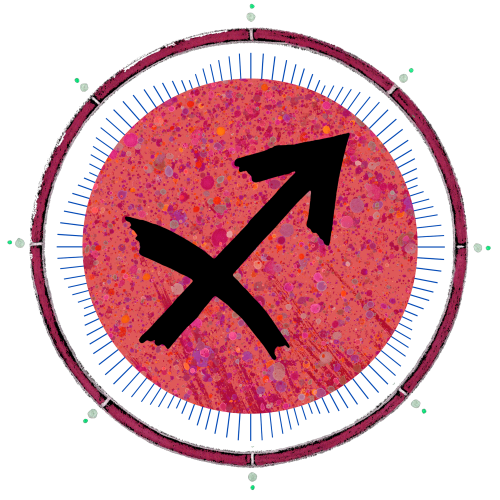
Dear Friend and Reader:
We are past the two historic conjunctions of April, the total eclipse conjunct Chiron in Aries; and the alignment of Jupiter and Uranus in Taurus. I’ve raised a ruckus about these events like no other, and today would like to return to events in the air signs.
Because the events of April were conjunctions, they represented the beginnings of cycles, which will extend far into the future. There’s nothing like a widely visible solar eclipse conjunct a high-potency planet to say hello, you’re in new territory.
Now we get to discover what that’s about. On Sunday, the distant planet Sedna (discovered 2003) enters Gemini after being in Taurus since 1966.
Of the 1960s, The Eagles famously wrote, “You can check out any time you like, but you can never leave.” Except for people who carry the astrology of that era in their natal charts, the sign-change of Sedna is an important defining placement of the ‘60s finally giving way to the future.

A Planet of Environmental Awareness
When Mike Brown and company discovered an object designated 2003 VB12 early in the 21st century, they got in some trouble for bestowing it a name before the International Astronomical Union (IAU) had assigned it an official minor planet number.
(This is why Brown’s subsequent discoveries had provisional nicknames like Easter Bunny, Santa Claus, and famously, in the case of Eris, Xena, named for the warrior princess of television fame. Once the orbit of a new discovery is confirmed and a minor planet number is given, they are ready for naming by the discoverers.)
Note, these are all local planets orbiting our Sun in the region just beyond Pluto — not exoplanets of other stars. Sedna is unusual in that it has an 11,400 year orbit. It was last in Gemini at the end of the most recent ice age.
Brown, and his colleagues David Rabinowitz and Chad Trujillo, tend to name planets they find to call attention to issues of society (and they are very good at it). Sedna was named for an Inuit (Eskimo) goddess of creation, which points to the crisis at the ice caps, and global warming generally.
Over the past two decades, astrologers seem to have assigned it the role of environmental awareness.

Feeding the People
Before we go there, Sedna the goddess originates as a young girl who holds herself as exceedingly beautiful, for whom no man is good enough. She will not marry or leave home; she spends her time mirror-gazing and brushing her long, luxurious hair.
A horrid sequence of interpersonal and family events ensue from there, at the end of which she ends up at the bottom of the Arctic Ocean. Her various appendages freeze off and become porpoises, whales, and the other sea-creatures who sustain the Inuits with food and fur.
In depictions, she looks a little like a Weeble but with the tail of a mermaid: the goddess of the frozen waters.
This is part of a cycle of myths where a goddess sacrifices herself so that the people may eat.
In every respect, we have a myth that describes the times in which we are living. Particularly after having spent more than half a century moving through Taurus, we have references to the condition of the Earth and its ability to sustain our lives.
And at least in Western culture, we get a clue about the prevailing chilly treatment of men by many women.

Sedna in Gemini
Now Sedna is moving into Gemini, where she will be traveling into 2067. While Gemini is the sign of the twins, it’s also the sign of the human mental environment.
This includes written language, other forms of communication such as speech, one’s immediate environment, one’s siblings, and matters of local commerce. (The international versions of these things are found across the dial in Gemini’s opposite sign, Sagittarius.)
In these areas of life, too, we are witnessing and experiencing profound changes happening due to the advent of digital technology, and what is incorrectly being called “artificial intelligence.” Under these influences, we’re experiencing a kind of global warming of consciousness.
I propose that the mental environment is the most important one because it’s how we process all of our perceptions. When it’s raining, it’s your mind that tells you about it, and makes the decision to go inside.
For better or worse, it’s the human mind that distinguishes us from every other creature (with a little help from the opposable thumb). And right now the human mind is under the influence of the fantasy machine known as AI.
How far back can we trace this? While computers go back to the World War II era, and in a sense all digital is artificial intelligence, we need to draw a fuzzy line somewhere between then and now. I would say that roughly the 21st century is the time of the fantasy machine taking over, and if I had to give it a chart, it would be the same one I use for the Sept. 11 incident.

It’s Not About a Thing Out There
Every day, a few new articles arrive in my inbox, pretending to understand the influence of AI. They fret over where jobs are going, and artificial rock bands playing fake concerts, and everyone from lawyers to elementary school students making up fake writing. You will read that we need AI programs to help us spot the work of other AI programs.
You will read that generally, people are ill-equipped to tell what is true from what is false; what is authentic from what is a fugazi. All of these are secondary effects. They include how the Earth is flat, how the Beatles (or the Rolling Stones) never wrote a song and, and how we are living in a simulation — a “matrix.”
These are issues about which adherents are absolutely certain (and you’re a fool or a ball Earth-zealot if you don’t believe them).
You may have read about this thing being called the 4th Industrial Revolution, which is designed to render humans obsolete. Here, we are getting closer to a primary effect.
The problem with AI is not about whether a thing out there is real. The problem is that you will start to believe that you are a simulation. This is not the same thing as densities or secondary realities described in various spiritual traditions. It’s an effect induced by overexposure to digital technology.
This has heavily influenced and is in the process of seizing the mental environment — which means your personal mental environment, and the one that we all share.
It still surprises me how little attention is paid to this realm of consciousness, but one function of the digital environment is to blot out anything unlike itself. People worry that the robots are taking over, though we are becoming like them faster than they are becoming like us.

The Pluto in Aquarius Factor
When a slow-mover changes signs, there can be immediate and precipitous effects. But most of what happens can be found in subtle shifts to the background: the environment and the ground of consciousness.
Sedna entering Gemini, an air sign, affects thought and awareness in the most local sense, starting with the hemispheres of your brain and extending into your local community. There is another transit into the air signs as well, the nascent and almost complete entry of Pluto into Aquarius.
This has been in progress for a little over a year, and finalizes after one last brief retrograde into Capricorn on Nov. 19, 2024.
Pluto into Aquarius describes a shift in the much wider social environment that is also a factor of digital/AI. I am being polite when I say “shift.” I really mean “potentially overwhelming force.” We are all noticing the ways that the world has changed through and beyond the 2020-21 crisis. What we call “covid” was a factor of the digital environment, its rapid acceleration, and advancing the planned takeover of humanity by its controllers: how it happened, how we responded, and the changes to society.
In a word, I would describe them as antisocial. Any time a human interchange is subtracted, that qualifies. It’s a result as well as a conditioning influence. Think of all the people who would have sat in a restaurant together who are now getting deliveries of takeout food from people they don’t need to talk to.
Multiply that out by a few orders of magnitude for a sense of the way we are being altered. And Pluto in Aquarius had not even begun; the crisis was mostly waged during Saturn in Aquarius (early 2020 to early 2023).

No Avoiding, Only Engaging
Whatever they may represent, there will be no avoiding these changes to the mental and social environments. We get to tap into them as resources, use them as creative tools, or passively allow them to wash over us.
We are already inundated with not only digital technology but its psychic effects. We wonder why the world seems insane and over the top in a way that it’s never been before.
We wonder when the encroachment of total control is going to end, and when people’s appetites for it will abate. And yet there seems to be a haze of ignorance over something like central bank digital currency (CBDC), which will (under the plan) eliminate dollars and connect your money to your vaccination records to your medical records to your geographic location and other matters of your social credit score.
People never seem to grasp that control is its own motive, driven by the tools available to achieve it. And as people gradually forget what freedom was, what feelings were and what beauty is, there will be no countervailing influence. People who have forgotten their humanity have little interest in something they don’t remember, that makes them feel vulnerable (or that they never knew about).
As people become disembodied, anger and violence seem more appealing as a means of self-actualization, since there seems to be no other available.

The Body and Technology
I will again repeat the words of Eric McLuhan that I first quoted in 2016. This is not media theory. It’s a basic orientation and survival tool. The younger Dr. McLuhan wrote to me:
“The body is everywhere assaulted by all of our new media, a state which has resulted in deep disorientation of intellect and destabilization of culture throughout the world. In the age of disembodied communication, the meaning and significance and experience of the body is utterly transformed and distorted.”
The transformation and the distortion are not the only problem. The results are. And both cause and effect conceal themselves as access to our feelings and senses is altered, reduced or eliminated — and insanity becomes normal.
In 1999, I first published this quote from Conversations with God, Book 3. I will share it again.
“I want to repeat this, because it is vital that you hear this. Once before on your planet, the technology you developed was far greater than your ability to use it responsibly. You are approaching the same point in human history again. It is vitally important that you understand this.”
He continued, “Your present technology is threatening to outstrip your ability to use it wisely. Your society is on the verge of becoming a product of your technology rather than your technology being a product of your society. When a society becomes a product of its own technology, it destroys itself.”
Today, we stand on the frontier of a question: Does anyone care? And for those who care, what exactly can you do?
I would love to hear your ideas about that.
With love,


This Week’s Photos
These photos were all made within a one-block radius of the Planet Waves office. Mostly they are experiments with a focal length I rarely use, 50mm, which is essentially unmagnified regular vision. Yasujiro Ozu was a Japanese director who only used this focal length, giving his films a symmetrical and formal look. Using that lens for a couple of days, I could almost smell the saki.
Below is my portrait of Eric McLuhan, from the one day I spent roaming around Manhattan with him in late 2017. — efc




